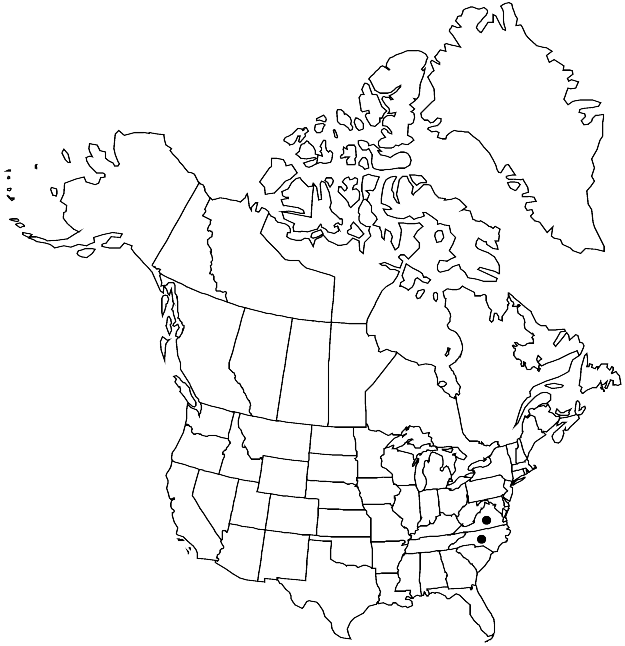Difference between revisions of "Orthotrichum keeverae"
J. Elisha Mitchell Sci. Soc. 72: 281, figs. 3 – 12. 1956.
imported>Volume Importer |
imported>Volume Importer |
||
| Line 48: | Line 48: | ||
|publication year=1956 | |publication year=1956 | ||
|special status=Endemic | |special status=Endemic | ||
| − | |source xml=https:// | + | |source xml=https://bitbucket.org/aafc-mbb/fna-data-curation/src/2e0870ddd59836b60bcf96646a41e87ea5a5943a/coarse_grained_fna_xml/V28/V28_74.xml |
|genus=Orthotrichum | |genus=Orthotrichum | ||
|species=Orthotrichum keeverae | |species=Orthotrichum keeverae | ||
Latest revision as of 21:37, 5 November 2020
Plants 0.5–2 cm. Stem leaves rigid, erect-appressed when dry, oblong-lanceolate to narrowly lanceolate, 2.2–4 mm; margins revolute nearly to apex, often irregularly notched near apex; apex slender-acute, cuspidate; basal laminal cells linear-elongate, walls thick, nodose; distal cells 7–14 µm, 1-stratose, papillae 1 or 2 per cell, conic, small. Specialized asexual reproduction absent. Sexual condition gonioautoicous. Seta 1 mm. Capsule 1/2 emergent when dry, cylindric, 1.5–2 mm, distinctly 8-ribbed entire length when mature; stomata superficial; peristome double; prostome absent; exostome teeth 16, often connate at base, recurved when dry, truncate, densely papillose; endostome segments 16, well developed, usually present when capsule is old and dry, thick, stout, of 2 rows of cells, almost as wide as exostome teeth, yellowish brown, densely papillose. Calyptra conic-oblong, smooth, hairy, hairs papillose. Spores 17–27 µm.
Habitat: Trunks and branches of live and dead Quercus montana
Elevation: moderate to high elevations (1500-2000 m)
Discussion
Orthotrichum keeverae is the only species in southeastern North America with 16 recurved exostome teeth, a stout endostome, and cuspidate leaf apices. The exostome teeth are truncate and partially connate at the base, forming a basal membrane.
Selected References
None.
